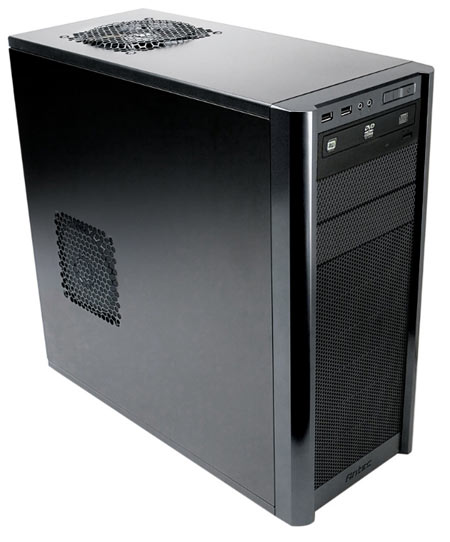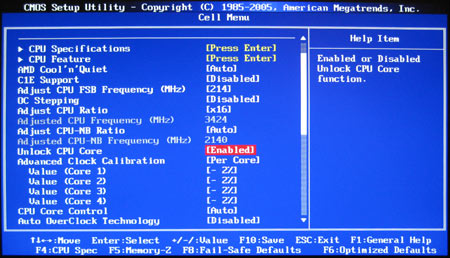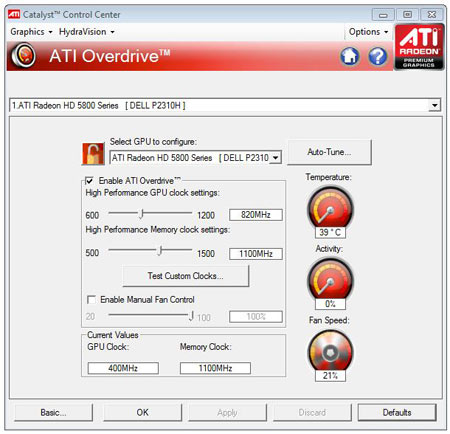System Builder Marathon, June 2010: $1,000 Enthusiast PC
Assembly, Overclocking, And Core Unlocking
Assembly went without a hitch on the hardware side of things, but the software installation wasn’t quite as smooth.
It seemed that Gigabyte's Radeon HD 5830 cards weren’t happy with AMD's general-purpose Catalyst 10.4 drivers and required older release candidate drivers on the bundled driver CD to be properly detected by Windows. Fortunately, the new Catalyst 10.5 drivers were released during our testing, and these seem to work with the Gigabyte cards. So, we used the newer drivers for our benchmarks.
Even so, we did bump into a problem with one of our game tests, S.T.A.L.K.E.R.: Call of Pripyat. This benchmark simply will not run on this system with both Gigabyte Radeon HD 5830 graphics cards installed. Turning CrossFire off in the drivers helps, but the benchmark continues to crash until the second card is physically removed from the system. This isn’t something we’ve experienced with S.T.A.L.K.E.R.: Call of Pripyat in the past, so it’s a bit baffling.
After a little online investigation, we noticed that other people have problems with Gigabyte's Radeon HD 5830 and S.T.A.L.K.E.R.: Call of Pripyat as well. We hope it's a driver issue that can be worked out in the future.
Overclocking and Core Unlocking
Since our CPU comes from a generic Newegg order (it's not cherry-picked by the manufacturer), unlocking the fourth dormant CPU core is fair game for the purposes of this comparison. If successful, this will turn our Phenom II X3 CPU into a Phenom II X4, allowing the $1,000 system to be a lot more competitive in multi-threaded application benchmarks.
The MSI 790X-G45 motherboard allows core unlocking through a simple Unlock CPU Core option in the BIOS menu. Flicking the switch rewarded us with a fully functioning quad-core CPU, and after proving this with some tests, we moved onto overclocking.
Get Tom's Hardware's best news and in-depth reviews, straight to your inbox.
It's hard to complain after modifying this sub-$100 CPU into a fully functional Phenom II X4, but our overclocking efforts didn’t pan out as well as we hoped. With the CPU voltage upped to 1.5V and the northbridge increased to 1.26V, our maximum overclock was 3,424 MHz. The unlocked multiplier didn't help us all that much in this case, and our highest overclock employed a 16x multiplier coupled with a 214 MHz bus speed.
While the overclocked CPU ran 624 MHz above the stock setting, our final result was only 24 MHz faster than a stock Phenom II X4 965. Then again, we're not sure any other sub-$100 CPU would have been a better choice. An Athlon II X3 440 might overclock a few hundred MHz higher, but might not core unlock at all, leaving us without that fat 6MB of L3 cache. As it is, we think this overclock will at least get us within arm's length of the stock $1,500 system's numbers from our last SBM.
Our Gigabyte Radeon HD 5830 graphics cards weren't particularly overclock-friendly in a CrossFire configuration, delivering a meek 20 MHz core overclock (820 MHz total) and a more respectable 100 MHz (1,100 MHz total/4,400 MHz effective) memory overclock. When we ran them independently, we managed to squeeze higher clock rates out of these cards (in the 875 MHz core/1,150 MHz memory range), but these higher clock speeds didn't work when the cards were paired up in CrossFire.
Current page: Assembly, Overclocking, And Core Unlocking
Prev Page Memory, Hard Drive, And Optical Drive Next Page Test System And BenchmarksDon Woligroski was a former senior hardware editor for Tom's Hardware. He has covered a wide range of PC hardware topics, including CPUs, GPUs, system building, and emerging technologies.
-
alikum When you say SBM: Enthusiast System, I am expecting this to be more than just another gaming rig. You may have your own reason for sticking to a Phenom II x3 720 and HD5830 crossfire but I believe a Phenom II x4 955 and HD5770 crossfire would make more sense or more well-balanced (instead of trying your luck by unlocking cores). In fact, we could also grab a HD5870 and downgrade our mobo a little and that would make a truly well balanced enthusiast system.Reply -
one-shot It would have been nice to see the PII X6 1055T with a moderate downgrade in GPUs to afford the higher cost of CPU and motherboard. The i7 embarrasses the PII X3.Reply -
IzzyCraft not a fan of the 5830's or the 720 cpu choice is all.Reply
Would have rather seen a dual 5770's or a 5870 with a i5-750 or a 955
games more and more are using cpu for doing things. I also tend to use a comp for other things more then games. -
Tamz_msc A phenom II 955 BE:160$+2 Xfx hd 5770sfor320$+GIGABYTE GA-890GPA-UD3H for 140$=620$ would certainly have been a better choice than your 670$ for CPU+GPU+mobo.Reply -
Tamz_msc Tamz_mscA phenom II 955 BE:160$+2 Xfx hd 5770s for 320$+GIGABYTE GA-890GPA-UD3H for 140$=620$ would certainly have been a better choice than your 670$ for CPU+GPU+mobo.Reply



